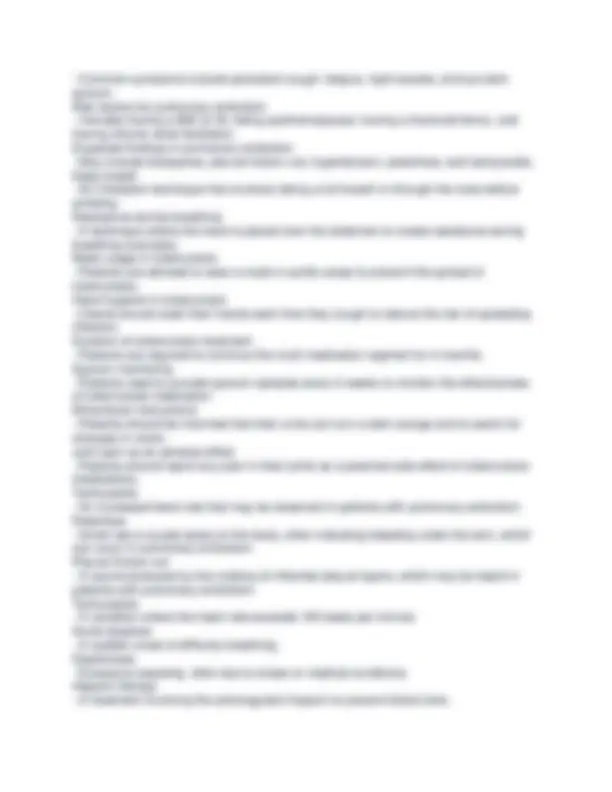
ATI PN Comprehensive Predictor Exam
2024-2025 With NGN
Gastrostomy tube feedings
- Administer the feeding over 30 min.
Digoxin administration
- Report an apical pulse of 58/min.
Advance directives
- Arrange for an ethics committee meeting to address the family's concerns.
Caring for clients with glasses
- Store the glasses in a labeled case.
Contact precautions
- Wear gloves when providing care to the client.
Acute myocardial infarction recovery
- Obtain a cardiac rehabilitation consultation.
Oral contraceptives contraindications
- Thrombophlebitis is a contradiction to the use of oral contraceptives.
Living will creation
- Evaluate the client's understanding of life-sustaining measures.
Acute chest syndrome in sickle-cell anemia
- Substernal retractions indicate acute chest syndrome and should be reported.
Gastric lavage
- Perform a gastric lavage for a client who has upper gastrointestinal bleeding.
Gastric Lavage
- A procedure to wash out the contents of the stomach, often performed in cases of
gastrointestinal bleeding.
Amyotrophic Lateral Sclerosis (ALS)
- A progressive neurodegenerative disease affecting nerve cells in the brain and spinal
cord, leading to loss of muscle control.
Rheumatoid Arthritis
- An autoimmune disorder that primarily affects joints, causing inflammation and pain.
Petechiae
- Small red or purple spots on the body, caused by bleeding under the skin.
Ecchymoses
- Larger areas of bruising caused by bleeding under the skin.
Platelet Count
- A blood test that measures the number of platelets in the blood, important for blood
clotting.
Cast Care
- Post-application care for a cast, including monitoring for circulation and skin integrity.
Vision Loss
- A decrease in the ability to see, which may require specific care strategies.
MEDLINE


























